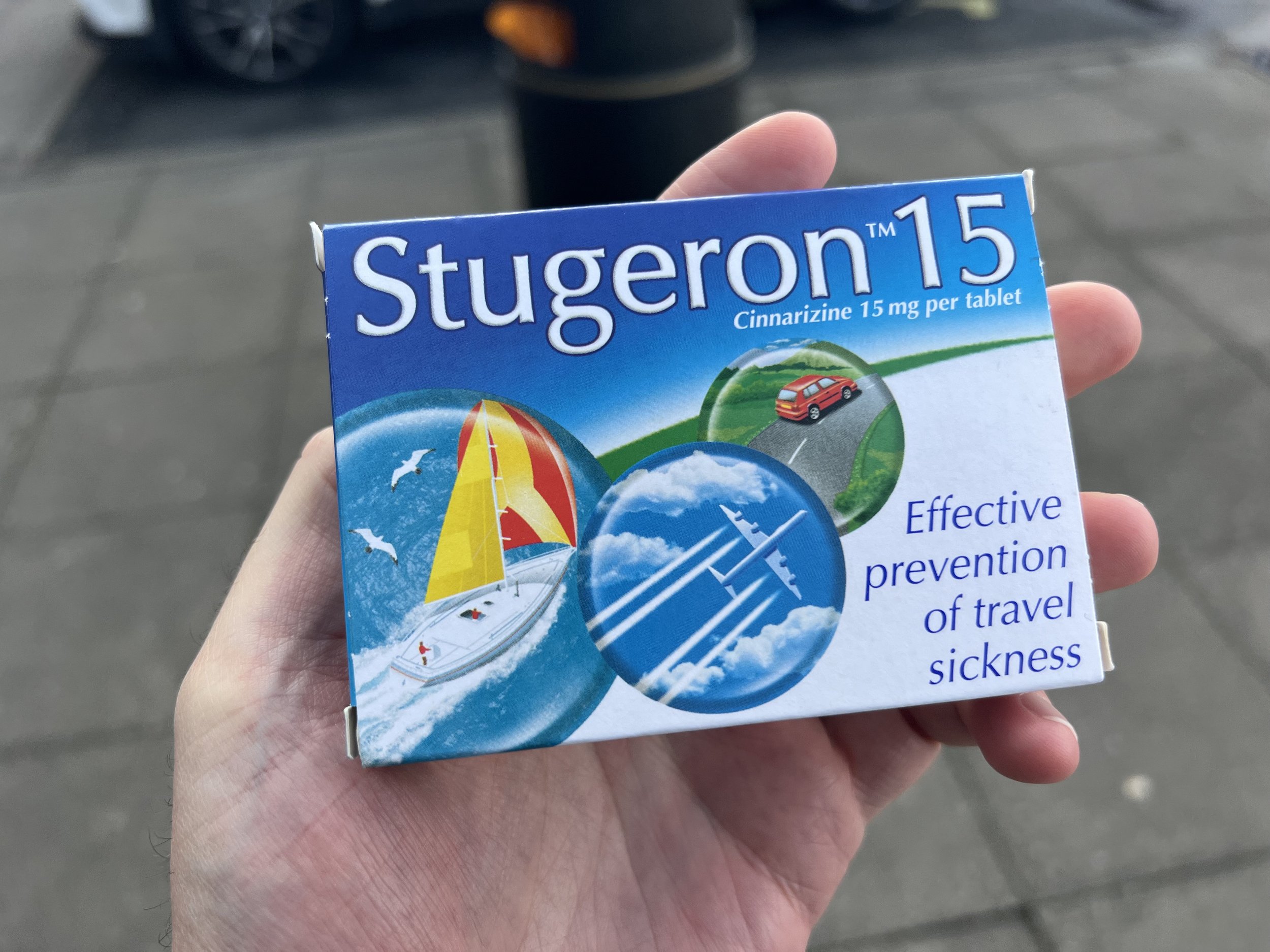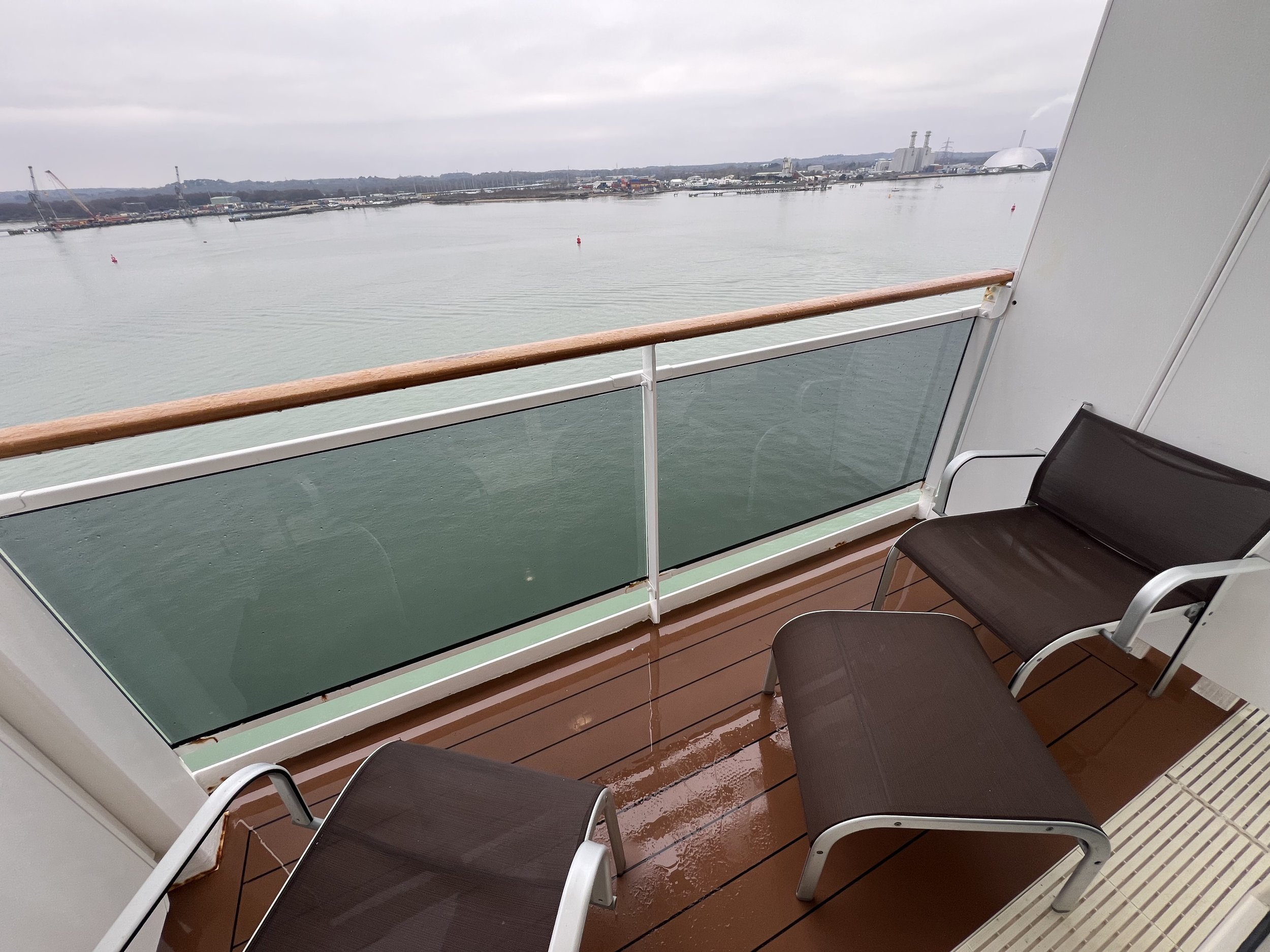Feeling Seasick on a Cruise: How to Help and Prevent Seasickness
If you’re considering taking a cruise, you might be concerned about one major element - will you feel unwell onboard? Before you read any further, I’d like to tell you not to worry - this concern is SUCH a common one among both new and experienced cruisers alike. Anyone who’s ever experience motion or sea sickness will tell you that it’s a pretty miserable way to spend a day, so of course you’re a little concerned about this when you’re spending your hard-earned money on a cruise vacation!
In this post, I’m going to unpack this topic a little, by sharing with you a few things that you can do to really help keep seasickness at bay. You’ll find that putting a little thought into this topic in advance could really help you once onboard, and don’t worry - some of these things are much simpler than you might think!
First, let’s start with a question I get asked more than almost any others…
Can you feel the ship moving when you’re on a cruise?
This is a widely debated question. Some people think that you’ll feel less movement on a larger ship, while some people feel the older ships handle the oceans better. I’ve heard some people say that they avoid taking some cruises due to stories they’ve heard in the past, and they instead stick to ‘safer’ waters.
My honest answer is that, for a large part of your cruise, you’re probably not going to feel the ship move much at all. This really surprised me when I took my first cruise - I was only really aware of the fact that we were moving due to the fact that the wine in my glass looked like it was vibrating slightly, and you could see that the crystals in the chandeliers were twitching a little, if you looked closely enough.
I remember, on my first cruise, being so impressed that the whole operation of the ship was totally unphased by the fact that the ship was moving - the waiting staff in the restaurant didn’t even seem to notice.
As I’ve cruised more in recent years, I’ve learned that the oceans can be really unpredictable. For example, I’ve taken cruises in the English Channel that have been beautifully calm, and I’ve then cruised a few weeks later to find a stormy and angry body of water. The same applies to my experience of cruising places like the Caribbean - it’s difficult to predict exactly what the water’s going to be doing during your cruise!
While you’re probably not going to feel the ship moving much when you cruise (if the conditions are good), I always like to be ‘real’ with people on this topic. At the end of the day, you’re taking a cruise on a ship, which is floating on the ocean. Therefore, you should expect that it’s going to move a little…!
So, how can you keep the feeling of seasickness at bay? Let’s move on to look at some of the things you can do to help!
1. Green apples are your friend - try eating one!
Ok, we’re starting the list today with a popular folk remedy, but lots of people believe that eating foods like green apples, ginger and crackers can all help to settle your stomach if you are feeling the effects of motion sickness on a cruise.
There’s a number of theories behind why each of these foods is said to help when you’re feeling the effects of motion sickness take hold. My personal opinion is that you won’t be doing yourself any favours by loading up on french fries and chicken tenders at the buffet if you’re feeling unwell - ditch the unhealthy options, and go for some fruit - you might thank yourself later.
I’ve even heard cruisers claim that they can tell what the weather’s going to be like on their ship over the next few hours, as they’ve reported seeing green apples appearing at the buffet…!!
Ditch these foods and head to the fruit counter…!
2. Take some travel sickness and motion sickness medication with you on your cruise!
If you’re planning your first cruise, you might not have come across this before. You can buy specific medication from your local pharmacy that will help with any feelings of motion sickness.
You can sometimes even purchase this medication from your usual supermarket, so it’s incredibly easy to get your hands on. Better yet, it’s often pretty inexpensive, so worth packing in your bag just incase.
Note: with a lot of motion sickness medication, it’s most effective if you take a tablet a few hours before you’re expecting to feel the motion. For example, you could take a tablet a few hours before your flight, or before your cruise ship leaves port - don’t get caught out and forget to take one if you’re prone to feeling unwell with movement in general!
There are so many brands of motion sickness medication - this is what I pack on my cruises, just incase!
3. Wear a ‘patch’, or wear Sea Bands!
There are a number of ‘wearable’ items that can really help to settle you if you’re prone to motion sickness. Two of these are patches and Sea Bands, both of which you can buy from Amazon (I’ve included the links below!).
First, patches essentially look like little plasters that most people apply to their neck, just underneath their ears. This then helps to stabilise you in rough seas but, similar to the medication above, these should be applied prior to the motion being experienced. You can buy these patches on Amazon - click here!
Next, Sea Bands are among the most popular methods to help with sea sickness. All you need to do is wear these bands on your wrists (like a bracelet), and they apply a slight amount of pressure to your wrists, helping to stabilise you. I wore these throughout my first cruise and felt perfectly fine. Wether that was due to wearing Sea Bands, or because the water was calm, I guess we’ll never know. However, I do know that I’m glad I opted to wear them, as I was able to enjoy my first cruise to the full! You can buy Sea Bands on Amazon by clicking here!
Note: I recently took a cruise, and couldn’t believe how much the cruise line was charging for both of these items. If you think you’ll need them, buy them before you go and travel with them - you could save yourself a small fortune…!
4. Take it easy, and some fresh air!
If you’re feeling a little under the weather, then you might want to do nothing more than curl up in bed and try to fall asleep. You might also feel bad for feeling unwell, and worrying that you’re affecting your travel companions’ trips, as they’re probably worrying about you. However, chances are they want you to just relax and take it easy.
If I’ve ever felt unwell while ‘at sea’, I’ve found it really helps to simply get outside and breathe in some fresh air - I often find that the air conditioning on cruise ships doesn’t do me any favours in that situation!
Don’t worry - if you don’t want to be seen around the ship, you can do this by simply stepping out onto your balcony (if you’ve booked a balcony cabin, that is!). Otherwise, just take a quick walk to the outside decks - you might feel a whole lot better for doing so!
Get outside and breathe in some fresh air - it might do you the world of good!
5. Head for the ‘mid ship’ area!
Don’t worry - I’m not about to offer you the age-old advice that you should consider booking a cabin in the middle of the ship - you’ve probably heard that before. Regardless of where your cabin is on the ship, if you’re feeling unwell and the ship is rocking, you might benefit from making your way to the ‘mid ship’ area.
How do you know where the middle of the ship is? It’s easy - you’ll find maps of the ship all around - just go to one of the public decks, and take a walk along until you find that you’re roughly in the middle of the ship. You’ll often find there are some nice lounges, cafes or bars that you can spend some time in here.
You’re going to find a lot less movement in this part of the ship, and you might also find that the people-watching can help to take your mind off of the fact that you don’t feel your usual self!
Head to the middle of the ship if you’re feeling sick, and find somewhere to spend a few hours!
6. Consider booking a cruise away from open waters!
This is one that I only realised after I took a cruise to Alaska! I cruised Alaska’s ‘Inside Passage’, and I boarded the ship down in Seattle. For the first and last days of the cruise, our ship spent all day ‘at sea’, going to and from the Inside Passage. Our weather on these days was rough, but when we were up in Alaska, it was SO smooth and you could hardly feel the ship moving!
This is when I realised - if you cruise on itineraries that generally avoid vastly open waters, you stand a much better chance of being protected from the elements.
Last year, I took a cruise in the Adriatic, and the same applied here - our weather every single day and night was perfect, because the Adriatic is a relatively ‘protected’ body of water, rather than the Atlantic/Pacific, which are really open!
Keen to book a cruise with calmer waters? Look for more sheltered and protected bodies of water - this can really help!
If you’ve made it this far through this post, then I hope I’ve been able to shed some light on the topic of sea sickness when you cruise. I also hope that I’ve been able to help with settling some of your nerves - it’s totally normal for you to be worrying about this, but rest assured that some simple pre-cruise prep can really help!
Why not check out more of my cruise tips? This site is full of them! Click here to go back to the home page, where you can check out so many more posts!








